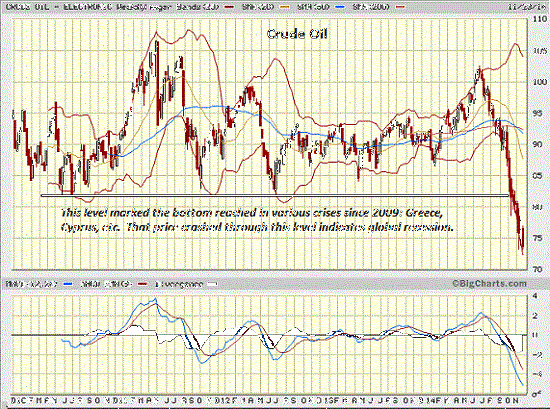How Falling Oil Prices Make a BlackSwan Event More Likely The Experts
Post on: 28 Май, 2015 No Comment

Wealth Management
Gas is pumped into a car at the Eastcoast filling station in Pennsauken N.J. in December, 2014. Associated Press
MANISHA THAKOR: These days, many Americans are experiencing sticker shock and awe when filling up their cars at the pump.
But to really understand the long-term ramification of lower oil prices, it is instructive to break down this phenomenon into two parts: the impact on individuals versus the impact on countries.
From an individual’s standpoint, lower prices at the pump act like a tax cut, giving consumers as a whole increased discretionary cash flow. This dynamic is particularly powerful (or “stimulatory” to use economics-speak) for lower- and middle-income households for which gas consumption represents a sizable portion of after-tax necessary living expenses. That extra cash in people’s collective pocketbook can potentially result in a positive effect on certain types of stocks – particularly shares in discretionary businesses.
Conversely, it will most likely have a negative effect on energy stocks. This is hardly shocking news, however, to anyone who has followed the correlation between stocks as a whole and energy prices over the years. Additionally, one of the biggest stimulators to our domestic economy of late has been energy infrastructure. So, a drop in capital expenditure could result in a potentially surprising drag on domestic GDP.<
From a country standpoint, the key question is whether you are a net energy importer or user. In the United States, Japan, India, China and most of Europe, we are net energy importers. As such, lower prices will help us spend less. Alas, it’s a zero-sum game on a global basis because what benefits net importers hurts net exporters, such as Russia, Iran, Venezuela and Mexico.
This, in turn, could lead to higher levels of political unrest in some countries that, in combination with other political/military agendas, could result in unintended consequences rearing their head in less-than-pleasant ways. Said differently, an important risk of low oil prices, one that individuals may not be anticipating, is that the drop may create black swan type events on the geopolitical front.
Past examples include the 1998 collapse of long-term capital levels, the 2000 blow-up of the tech bubble and the 2008 financial meltdown. In general, history has shown us to expect roughly one unpredictable black swan eventas defined by Larry Swedroe and Nassim Taleb each decade.

Another event that may not be anticipated involves high-yield debt. A lot of the high-yield debt that’s come to marketaround the globehas been energy related (think fracking). As individuals stretch for yield, they may find themselves with “bond allocations” that are significantly riskier than they anticipated.
So how do you protect your portfolio? You evaluate your true willingness, ability and need to take risk. Then strive for the right amount of risk in your portfolio. That’s generally the amount of risk you can stomach while still having acceptable odds of hitting your long-run financial objectives. Even if you have the best of financial plans, assuming more risk than you should take on may cause that plan to end up in the financial trash heap as emotion overtakes logic.
Manisha Thakor ( @ManishaThakor ) is director of wealth strategies for women at Buckingham and The BAM Alliance , a community of independent registered investment advisers.
Read the latest Investing in Funds & ETFs Report .














